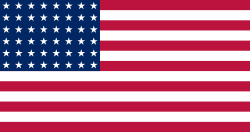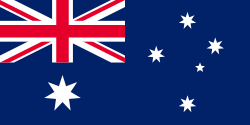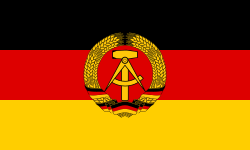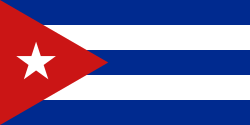Ellery Clark

Ellery Harding Clark (* 13. März 1874 in East Roxbury, Massachusetts; † 17. Februar 1949 in Boston) war ein US-amerikanischer Leichtathlet.
Bei den I. Olympischen Spielen 1896 in Athen gewann er den Wettbewerb im Weitsprung und im Hochsprung. Bis heute ist er der einzige Athlet, der diese beiden Disziplinen während einer Olympiade gewann. Des Weiteren nahm er am Kugelstoß-Wettbewerb teil. Beim Weitsprung-Wettbewerb nutzte Clark einen Hut als Markierungshilfe beim Anlauf. Seine beiden ersten Versuche waren ungültig. Bevor er seinen dritten Versuch antreten konnte, nahm ihm ein Kampfrichter (wahrscheinlich der spätere König von Griechenland, Konstantin I) den Hut mit der Begründung, dies wäre eine professionelle Praktik, weg. Der dritte Versuch war, ohne Hut, gültig und reichte um den Wettbewerb zu gewinnen.
Von 1893 bis 1912 war Clark einer der nationalen Top-Athleten. Obwohl Olympiasieger im Weitsprung gewann er nie eine nationale Meisterschaft in dieser Disziplin. Er war jedoch sehr erfolgreich im Mehrkampf, einem Vorläufer des heutigen Zehnkampfes. 1896 und 1897 wurde er Mehrkampfmeister von Neuengland. 1897 gewann er den Mehrkampf bei den amerikanischen Leichtathletikmeisterschaften, den AAU-Meisterschaften (Amateur Athletic Union, USA). Im gleichen Jahr zog er sich eine schwere Knieverletzung zu, welche ihn zwei Jahre lang von Wettkämpfen fernhielt. 1903, als 29-Jähriger, kam er zurück und gewann erneut den Mehrkampf der AAU-Meisterschaften. Die zweiten Olympischen Spiele, an denen er teilnahm, waren die Olympischen Spiele 1904 in St. Louis. Jedoch lähmte ihn eine Bronchitis, so dass er lediglich Platz sechs im Mehrkampf belegte. Bis zu seinem 56. Lebensjahr nahm er an Wettbewerben im Gehen teil.
1991 wurde Clark in die USATF (US-Leichtathletikverband) Hall of Fame aufgenommen.
1897 machte Ellery Clark seinen Abschluss in Harvard (Cambridge, Massachusetts). Er arbeitete als Autor von 19 Büchern (Die Geliebte des Korsaren – Originaltitel Caribbean – wurde 1952 verfilmt), als Anwalt, Leichtathletiktrainer und Lehrer, und saß im Stadtrat der Stadt Boston.
Ergebnisse/Platzierungen bei Olympischen Spielen
| Disziplin | 1896 | 1904 |
|---|---|---|
| Weitsprung | 1. | – |
| Hochsprung | 1. | – |
| Kugelstoßen | 5.–7. | – |
| Zehnkampf | – | 6. |
Veröffentlichungen
- The first americans at the olympic games, in: The Boston Chronicle vom 9. März 1911.
Weblinks
- Ellery Clark in der Datenbank von Olympedia.org (englisch)
| Personendaten | |
|---|---|
| NAME | Clark, Ellery |
| ALTERNATIVNAMEN | Clark, Ellery Harding |
| KURZBESCHREIBUNG | US-amerikanischer Leichtathlet |
| GEBURTSDATUM | 13. März 1874 |
| GEBURTSORT | East Roxbury, Massachusetts |
| STERBEDATUM | 17. Februar 1949 |
| STERBEORT | Boston |
Auf dieser Seite verwendete Medien
Olympic Rings without "rims" (gaps between the rings), As used, eg. in the logos of the 2008 and 2016 Olympics. The colour scheme applied here was specified in 2023 guidelines.
US Flag with 44 stars. In use 4 July 1891–3 July 1896. Created by jacobolus using Adobe Illustrator, and released into the public domain.
US Flag with 44 stars. In use 4 July 1891–3 July 1896. Created by jacobolus using Adobe Illustrator, and released into the public domain.
US Flag with 45 stars. In use 4 July 1896–3 July 1908. Created by jacobolus using Adobe Illustrator, and released into the public domain. This flag was used during the Spanish-American War.
US Flag with 45 stars. In use 4 July 1896–3 July 1908. Created by jacobolus using Adobe Illustrator, and released into the public domain. This flag was used during the Spanish-American War.
US Flag with 46 stars. In use 4 July 1908–3 July 1912. Created by jacobolus using Adobe Illustrator, and released into the public domain.
Other version: Image:US 46 Star Flag.svgUS Flag with 46 stars. In use 4 July 1908–3 July 1912. Created by jacobolus using Adobe Illustrator, and released into the public domain.
Other version: Image:US 46 Star Flag.svgUS Flag with 48 stars. In use for 47 years from July 4, 1912, to July 3, 1959.
The Canadian Red Ensign used between 1921 and 1957.
This image has compared for accuracy (mainly colors) using an image from World Statesmen. The only change is making the maple leaves green from red. This image has compared for accuracy (mainly colors) using an image from World Statesmen. The most recent version of this image has changed the harp into one with a female figure; see [http://flagspot.net/flags/ca-1921.html FOTW
The Canadian Red Ensign used between 1921 and 1957.
This image has compared for accuracy (mainly colors) using an image from World Statesmen. The only change is making the maple leaves green from red. This image has compared for accuracy (mainly colors) using an image from World Statesmen. The most recent version of this image has changed the harp into one with a female figure; see [http://flagspot.net/flags/ca-1921.html FOTW
Flag of Australia, when congruence with this colour chart is required (i.e. when a "less bright" version is needed).
See Flag of Australia.svg for main file information.(c) I, Cmapm, CC BY-SA 3.0
The flag of the Soviet Union (1955-1991) using a darker shade of red.

(c) I, Cmapm, CC BY-SA 3.0
The flag of the Soviet Union (1955-1991) using a darker shade of red.

Flag of Second Polish Republic and later People's Republic of Poland in period from March 29, 1928 to March 10, 1980. Red shade used here is HTML "vermilion" #E34234. Proportion 5:8.
Flag of Second Polish Republic and later People's Republic of Poland in period from March 29, 1928 to March 10, 1980. Red shade used here is HTML "vermilion" #E34234. Proportion 5:8.
Die Staatsflagge der Deutschen Demokratischen Republik, vom 1. Oktober 1959 bis 3. Oktober 1990
Flag of Canada introduced in 1965, using Pantone colours. This design replaced the Canadian Red Ensign design.
Flagge des Vereinigten Königreichs in der Proportion 3:5, ausschließlich an Land verwendet. Auf See beträgt das richtige Verhältnis 1:2.
Flagge des Vereinigten Königreichs in der Proportion 3:5, ausschließlich an Land verwendet. Auf See beträgt das richtige Verhältnis 1:2.
Olympic Rings without "rims" (gaps between the rings), As used, eg. in the logos of the 2008 and 2016 Olympics. The colour scheme applied here was specified in 2023 guidelines.
Ellery Clark, Olympic champion 1896 Athens.





















